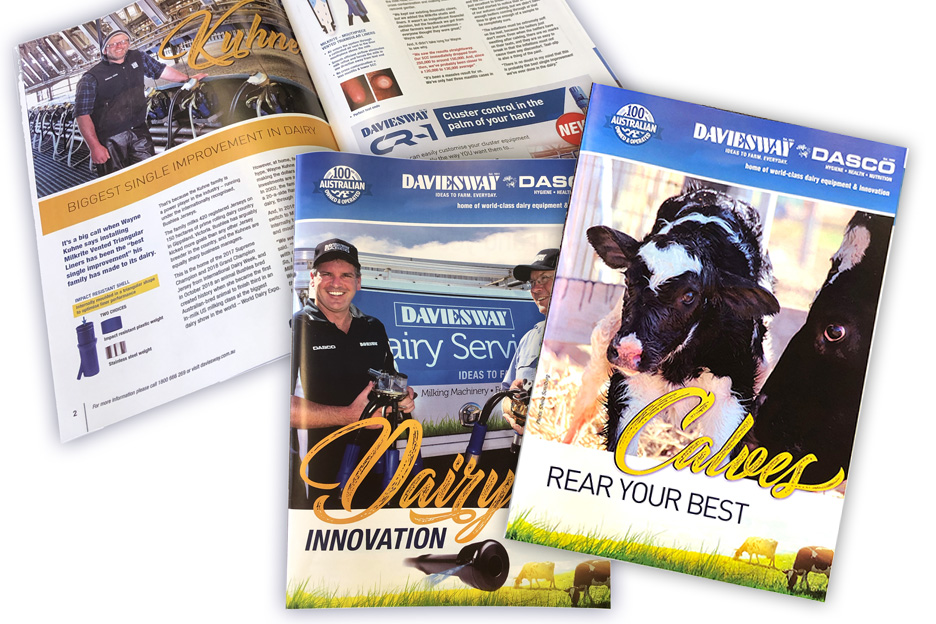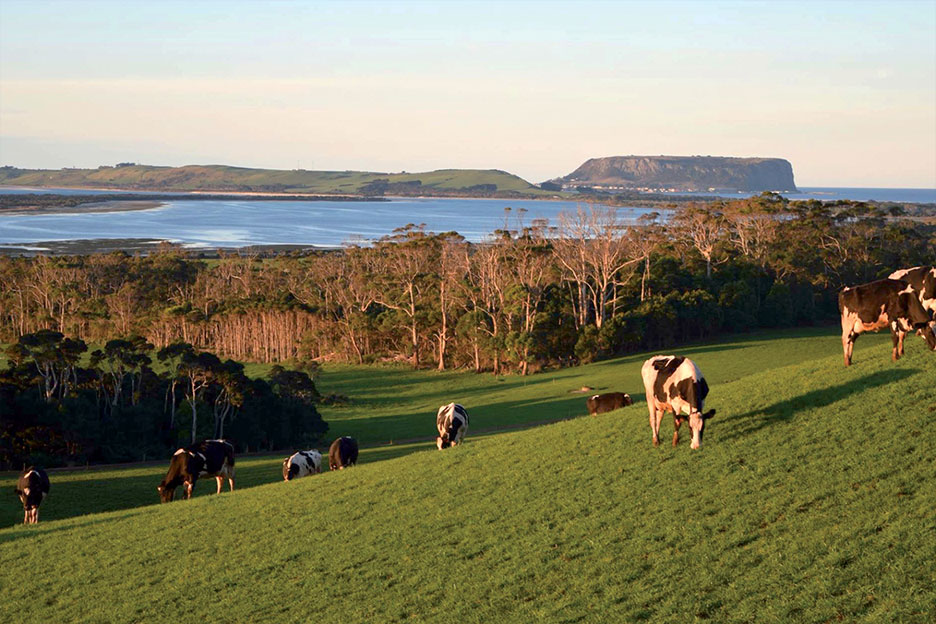
> Isaac and Angelique Korpershoek can’t believe something so logical took so long to be discovered and developed for the dairy industry.
The well-known Tasmanian dairy farmer and his veterinarian wife milk 300-320 autumn-calving cows on their 140-hectare (125ha effective milking area) coastal property at Forest. The property enjoys picturesque views across the Bass Strait with barely any winter frosts.
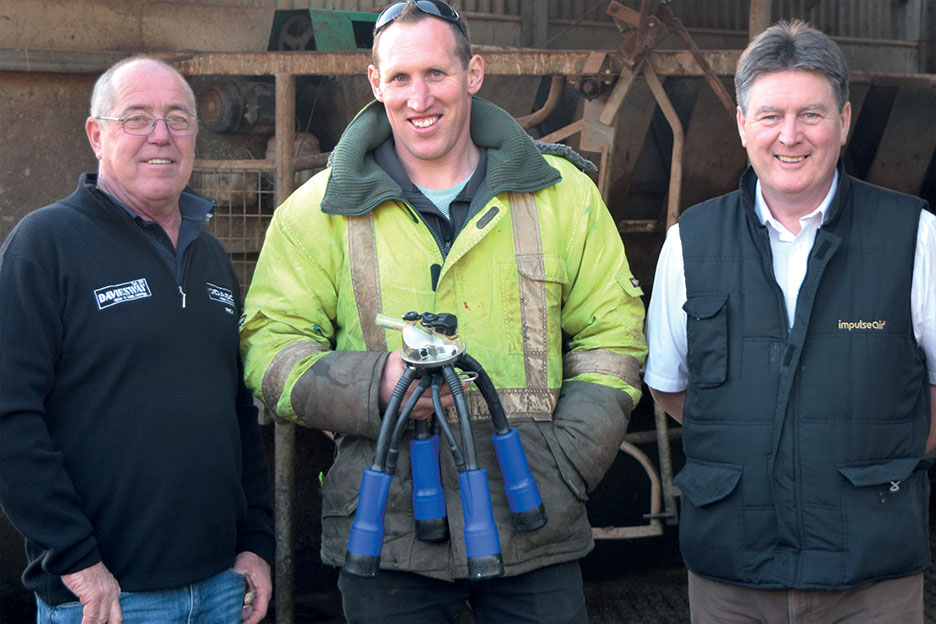
> Former dairy technician Isaac Korpershoek and his veterinarian wife Angelique brought a lot of combined knowledge to the milking equipment conversation. Isaac (middle) is pictured with Daviesway's Rick Wilson and Derek Davies from Milkrite Interpuls.
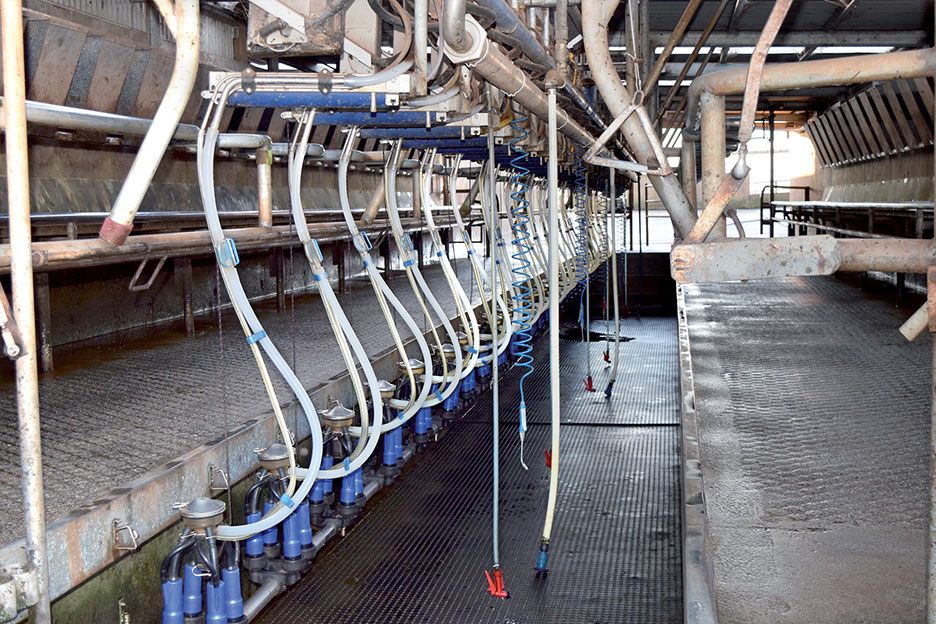
> Milkrite shells and liners can be fitted to most existing claws and jetters.
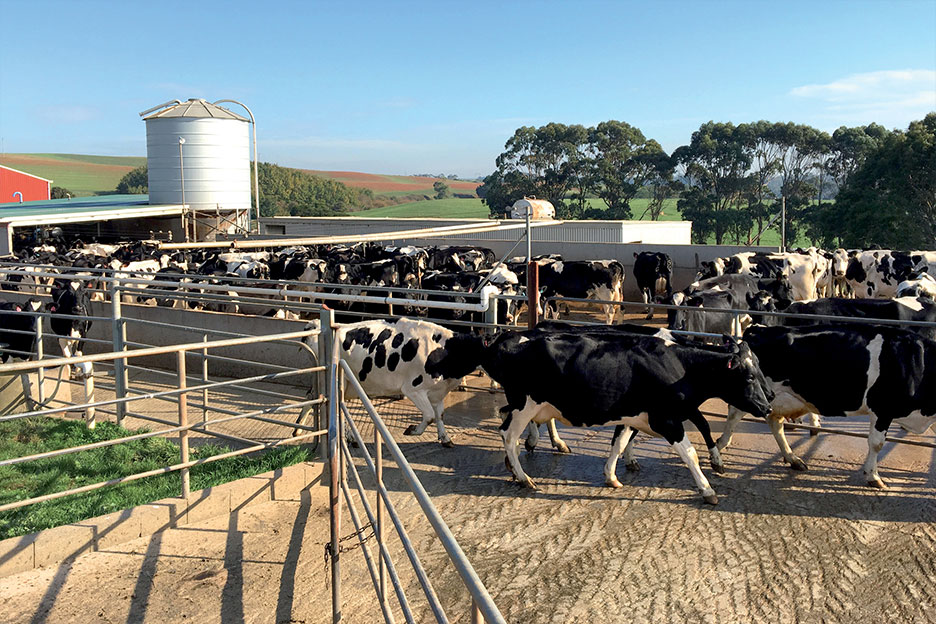
> First-calved heifers have settled into the dairy quicker since the Milkrite installation.
With a herd averaging 620 kilograms of milk solids on grass and silage, supplemented with 2.3 tonnes of grain per cow per year, this young couple was “cooking with gas” until two years ago. It was then they started having trouble with reddened teat ends, cup slip and a SCC (somatic cell count) that refused to drop under 180,000.
They turned to the milking equipment in their 25-unit swingover herringbone dairy.
The Korpershoeks’ search for a solution ended with the innovative technology in Daviesway’s Milkrite InterPuls shell and cup liners – the world’s only internally triangular moulded plastic shells, specifically designed for the mouthpiece-vented triangular liners.
A ringing additional endorsement was that 40% of US dairy farmers (and five of the world’s 10 biggest dairy farms) use the technology, which has won global innovation – excellence awards in milking technology in the UK (Prince Philip Award), France (Innov’ Space), Denmark (three-star award at Agromek) and Sweden (the highest award at Elmia).
Back home in Australia, Tasmanian farmers have also jumped on the technology – with more than 100 installations on the Apple Isle so far.
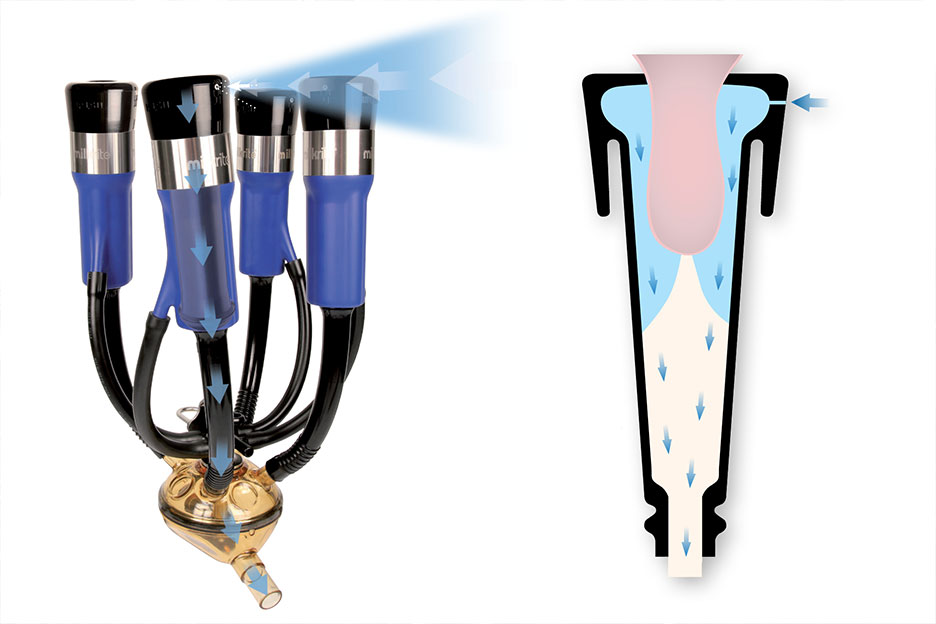
Logical and gentle
The two points of difference with the Milkrite InterPuls shells and liners are that teat compression during milk-out is evenly distributed from three sides of the teat – rather than the traditional two sides. The three-way compression is significantly gentler on teats. In addition, the air vent is positioned in the mouthpiece at the top of each liner (rather than at the claw), which introduces the air above the milk flow, and eliminates splash-back and cross-contamination.
Isaac says, “That three-way compression on the teat, rather than the two-point teat pinching we all grew up with made complete logical sense to me. I did my fitter trade as
a dairy technician, building dairies and centre pivots. What surprised me the most when we found this technology was that no-one had thought of it before. Angelique felt the same from a vet’s perspective.
“When you stop, and think about it, it’s a very simple and logical concept.” The shells and liners can be fitted to most existing claws (including a conversion to Milkrite Jetters), which worked for Isaac and Angelique’s budget.
“I thought that in addition to helping our SCC, it might also help when it came to breaking in my first-calving heifers to the dairy – and it certainly did,” Isaac adds.
“Our fresh heifers just don’t seem to play up when they first calve in anymore, because they are so much more comfortable now. And, I personally also like the lighter shells.”
Isaac’s SCC now sits around 100,000 all year round, on a herd averaging 34 litres. He says the level of teat comfort has allowed him to run the dairy’s vacuum higher at 48 kiloPascals, which took 15 minutes off milking.
As always, good news travels fast: Isaac’s neighbour is one of the more than 100 other Tasmanian dairies that have installed Milkrite InterPuls shells and liners.

